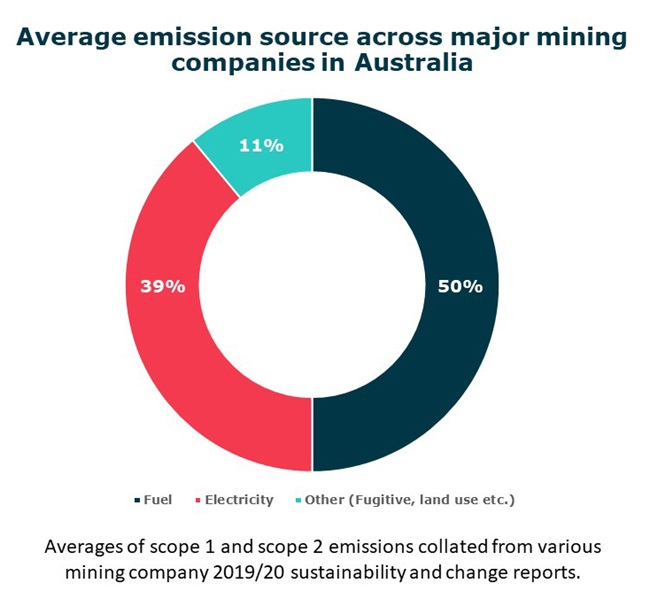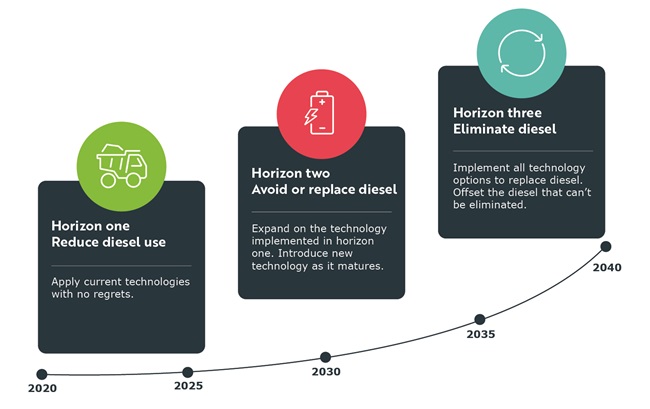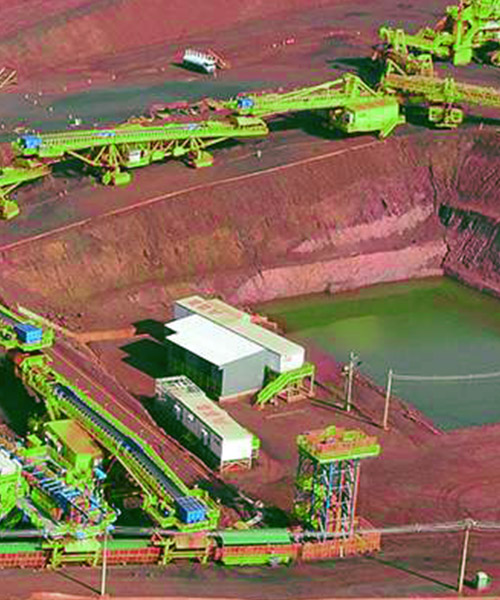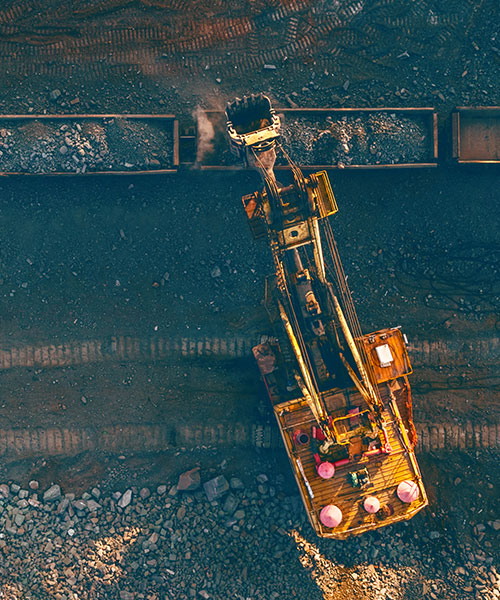How will the mining industry break its reliance on diesel?
Displacing diesel from a mining fleet can remove up to 40 percent of a mine site’s emissions. So, how can miners break their reliance on diesel and achieve their net zero commitments?
Many of the world’s largest mining companies have publicized their commitments to reach net zero carbon emissions by 2050 – if not before – in order to meet the goals of the Paris Agreement.
But as some of the most carbon intensive companies in the world, how can they shift to net zero emissions?
Some miners become disillusioned when assessing how hard or expensive decarbonization may be. But they need to do more than just cut their carbon emissions by building or buying renewable energy from the grid. They need to reduce, and ultimately eliminate, fossil fuels such as diesel and natural gas from their operations.
Breaking the reliance on diesel
According to a report by the Australian Renewable Energy Agency, the Australian mining sector uses 10 percent of the country’s energy use. And it consumes approximately five billion liters of diesel each year. For a large open-cut mine, this could amount to AUD 1 billion of a project’s annual operating expenditure across their mining portfolio.

Diesel fuel is expensive. Its supply is finite. And it is counterintuitive to the mining industry’s goal to be carbon neutral in the next 30 years. While some site operators may be comfortable with using diesel for their fleet despite the carbon emissions generated, it’s fast becoming incompatible with the direction of their company.
Ultimately, miners will need to reduce diesel consumption to achieve their scope 1 and scope 2 emissions targets. This will lead to either electric mining vehicles or mining vehicles fueled with hydrogen or biofuels.
But how do miners break the reliance on diesel efficiently and with little disruption? There’s a roadmap – but it’s complex.
Three steps to displacing diesel
Looking at decarbonization as one project is intimidating, and it’s why a staged approach is recommended. The three horizons model takes miners through a logical transition of fuel reduction, replacement and elimination. It provides a strategy that breaks the diesel reduction transition into manageable time periods.
However, these horizons aren’t standalone parcels of work. They’re interconnected. What’s decided in horizon one sets the foundation for successful decarbonization over the following decades.

Horizon one: reduce diesel use
Horizon one applies careful optioneering, research and development to build the foundation for emerging technologies as they become viable.
Here, we concentrate on a no regrets policy. Between 2021 and 2030, miners need to decide what technology they can implement now and transfer to horizon two and three. It can’t be something they’ll regret in a decade’s time.
This means considering all equipment that’s used in a mine to make this transition successful.
We work with customers to assess their fleet of diesel-powered equipment. From drilling rigs and large trucks to bucket excavators and loaders. We also consider ancillary equipment like bulldozers, water trucks and graders. Overall, this equipment can make up 40 percent of a mine’s total diesel consumption.
Currently, the technology options for miners include electrifying the mining fleet and using hydrogen fuel cell electric vehicles. As a step toward electrification, trolley assist is a technology that’s already being implemented.
Battery storage technology is advancing, but it still needs to overcome the challenges of size and robustness that’s needed for mine sites.
Haul trucks use around four times as much fuel travelling up an incline than they do on a flat surface. Trolley assist set up trucks like a tram, with a pantograph connecting to an overhead container system as the truck travels up an incline. It then takes this electricity to power the rear wheels of the truck while the diesel engine sits idle.
We can’t turn the engine off all together because it controls other systems, such as the power steering and electronic controls. But by using trolley assist, we can reduce diesel use by approximately 90 percent while driving up the ramp.
Battery storage technology is also advancing, particularly when it comes to electric vehicles. But it still needs to overcome the challenges of size and robustness that’s needed for mine sites. It’s not as straightforward for miners because they’re dealing with a 290-ton truck rather than a two-ton car but without the benefit of carbon fiber and aerodynamics.
Hydrogen fuel cell vehicles are also being explored, with some miners spending a considerable amount on research and development. As an industry, we need to understand whether this technology can carry forward into horizon three. We need to determine if enough renewable energy can be generated to produce hydrogen at a scale that eliminates diesel entirely.
Horizon two: avoid or replace diesel
Horizon two expands on the technology implemented in horizon one and looks for other options as the technology advances.
By 2030 to 2040, there should be viable options to remove diesel engines and their cooling systems from heavy mine vehicles and replace them with batteries. A battery for that size and scale will need to be 1.5 to 1.6 megawatt (MW) hours. While batteries in trucks and road vehicles are currently up to 1 MW (1,000 kWh) hour, they’re still not small or powerful enough to fit in mining haul trucks.
The move to create a 1.6 MW battery that will fit inside a truck’s engine bay is further in the future. But looking at the projections, battery prices are going down, and their capacity is increasing. This means electric mine vehicles start to look economic, with an additional advantage of a three-ton weight saving for haul trucks.
What’s more, these batteries could be recharged through the trolley assist electrical system. This is a great example of why choosing the right technology in horizon one is so important.
In addition to batteries, miners are looking at hydrogen powered trucks. They’re challenging haul truck manufacturers and technology providers to scale up a 1 MW hour battery in a truck that uses a combination of hydrogen and battery energy for driving, and brake retardation to charge the battery while the truck is traveling down into a mine. Trials into this technology are set to commence in a platinum mine in South Africa, and if successful, there are plans to extend this further.
Miners also need to consider equipment manufacturers outside the typical original equipment manufacturers. This is to take advantage of new and emerging technologies such as 100 percent hydrogen powered excavators. While they’re not at the size and scale needed for mining, it’s up to the industry to invest in research and development to reach the scale it needs.
Horizon three: eliminate diesel
Between 2040 to 2050, miners should be able to eliminate diesel from their mining and transport fleet if they follow horizon one and two. This includes in-pit mining equipment as well as long distance rail haulage from pit to port.
Overhead wires that are part of the trolley assist system can add more risk to operations. Horizon three presents’ opportunities for miners to start using inductive technology – or wireless charging.
This is the same principle as charging your iPhone on a wireless platform. And it works for moving vehicles, too. It’s currently being explored in the Formula E racing circuit where safety cars charge while stationary. The manufacturers of the Dynamic Electric Vehicle Charging (DEVC) system have also built and tested a system that can charge a vehicle while traveling at 100 km/h with 20 Kw rate of charging. Similar systems are also used in passenger bus services. For example, a fleet of electric buses in Washington use induction charging that’s built into the road surface and at bus stops.
This technology is currently in its infancy, but it’s a research and development opportunity that could help end diesel use in mine sites.
Every liter of diesel counts in the race to net zero
The vision for achieving net zero needs to be set today. But like any momentous change, it’ll take a series of well planned steps to reach the end goal. The next few years are critical, and miners will need to set staged horizons to pave a clear path toward a diesel-free future.



